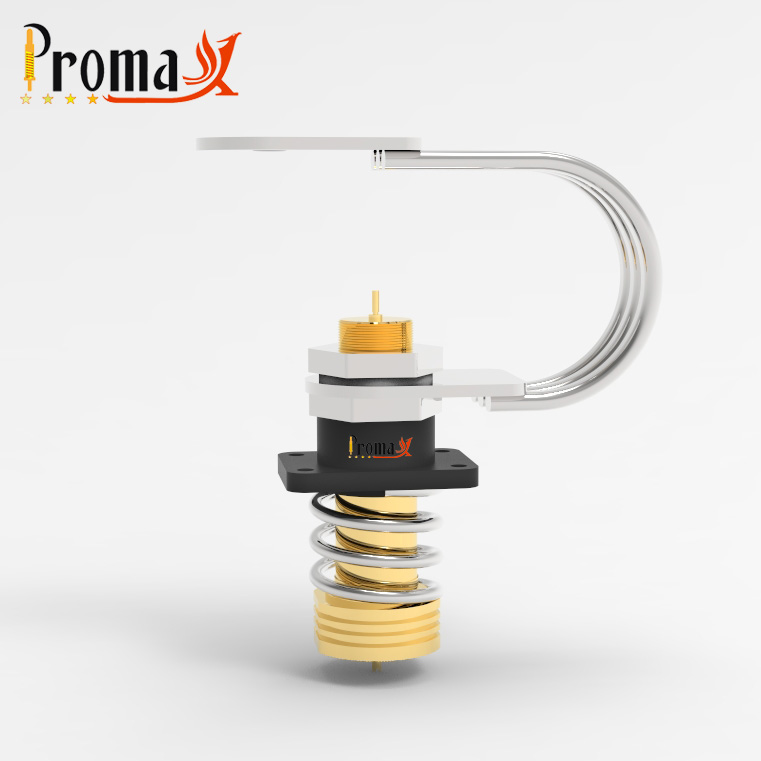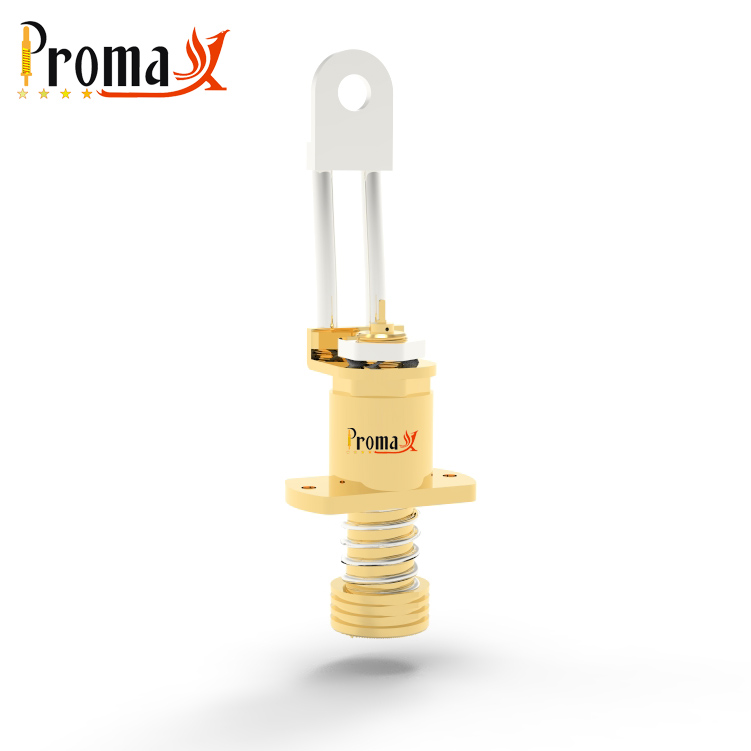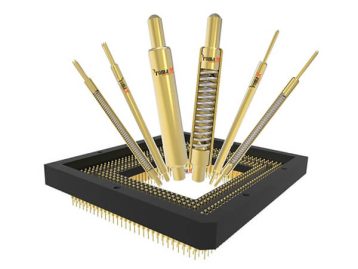Last Updated on November 2, 2023 by Tony
Measuring high currents is challenging and risky, requiring precision and safety. Mastering high current probe usage is essential whether you’re a professional or a DIY enthusiast. This guide will walk you through the steps to safely and accurately measure high currents, providing the confidence you need. Let’s begin!
Understanding High Current Measurement
What is High Current?
High current refers to a substantial flow of electricity through a circuit, similar to a gushing river compared to a gentle stream. It can occur in various situations, and accurately measuring it is essential.
Why Accurate Measurement is Crucial?
Accurate measurement of high currents is essential for various reasons, much like detective work in the electrical world. It ensures:
- Safe and Efficient Operation in industrial settings.
- Verification of Device Performance.
- Troubleshooting Issues when things go wrong.
- Compliance with industry standards and regulations.
Common Applications for High Current Measurements
High current measurements find applications in several industries, each with distinct needs:
- Power Electronics: Assess power loss and efficiency in devices like inverters and power supplies for effective energy conversion.
- Electric Vehicles: Vital for battery management and charging systems in electric vehicles.
- Industrial Automation: Ensures smooth and safe operations in automated processes, analogous to an orchestra conductor.
- Aerospace and Defense: Crucial for testing components, maintaining critical systems, and equipment security.
- Research and Development: Plays a vital role in evaluating new technologies and pushing boundaries.

Types of High Current Probes
High current measurements require the appropriate probe. Explore common types:
Hall Effect Current Probes
Advantages
- Non-intrusive: No physical contact needed for safety.
- Wide Current Range: Suitable for various current values, including DC and AC.
Disadvantages
- Limited Accuracy at Low Currents.
- Some models can be bulkier.
Typical Applications
- Motor Control: Monitoring and controlling electric motors.
- Power Quality Analysis: Assessing power quality in electronics.
Rogowski Coil Current Probes
Advantages
- Flexibility: Wraps around irregularly shaped conductors.
- Ideal for measuring AC.
- Non-Intrusive.
Disadvantages
- Lower Accuracy.
- Frequency limitations.
Typical Applications
- Power Quality Analysis: Evaluating AC power systems.
- Current Monitoring: Varied current waveforms.
Magnetic Current Probes
Advantages
- High Accuracy: Suitable for precision applications, including both AC and DC.
- Durability: Built to withstand rugged environments.
Disadvantages
- Some models may be larger.
Typical Applications
- Aerospace and Defense: Valuable for accuracy.
- Industrial Automation: Precision in machine operation.
Shunt Resistors and Current Transducers
Advantages
- Direct Measurement: Inserted into the current path for accuracy.
- High Precision: Ideal for accuracy-focused applications.
Disadvantages
- Intrusive probes.
- Limited Current Range in some cases.
Typical Applications
- Battery Testing: Monitoring charging and discharging.
- High-Current Research: Popular for direct measurement in research settings.

Selecting the Right High Current Probe
Selecting the correct high current probe is vital for precise measurements. Several key factors must be considered to match your probe with your unique requirements:
Factors to Consider
- Current Range: Ensure the probe can handle the highest expected current, accounting for potential spikes.
- Frequency Range: Verify the probe’s frequency range aligns with the currents you’re measuring.
- Accuracy Requirements: Assess the required precision for your specific application.
- Bandwidth: Ensure the probe’s bandwidth matches the signal frequency for accurate readings.
- Form Factor: Consider the probe’s physical size and shape, particularly in space-constrained scenarios.
Matching the Probe to Your Application
Different industries have distinct requirements:
- Aerospace and Defense: Prioritize precision and durability, making magnetic current probes a top choice.
- Power Electronics: Require wide current range probes for assessing power loss and efficiency.
- Industrial Automation: Choose compact probes due to space constraints.
Understanding your application’s unique needs is critical to selecting a probe for necessary accuracy and reliability.
Cost Considerations
While precision is appealing, budget constraints are a reality:
- Opt for a more affordable probe that meets accuracy requirements when necessary.
- Consider long-term ownership costs, including maintenance and calibration, to make an informed decision.
Safety Precautions to Measure High Currents
Safety is paramount in high current measurements due to the hazards posed by electric currents. Here are the main safety precautions to follow:
Importance of Safety
- Personal Safety: Protect yourself and others from the risks of electrocution and burns when dealing with high currents.
- Equipment Safety: Proper handling safeguards your measurement equipment, reducing the risk of damage.
- Data Accuracy: Safety measures minimize interference, ensuring accurate readings.
Personal Protective Equipment (PPE)
- Insulated Gloves: Shield against electrical shock and burns, meeting safety standards.
- Safety Goggles: Protect your eyes from sparks and arc flashes.
- Flame-Resistant Clothing: Prevent burns and injury in the presence of electrical arcs or sparks.
Electrical Safety Guidelines
- De-Energize Circuits: Disconnect power sources to eliminate electric shock risks.
- Isolate Equipment: Ensure disconnection from power sources and use lockout/tagout procedures.
- Proper Grounding: Safely dissipate electrical energy with appropriate grounding.
- Respect Voltage Ratings: Avoid exceeding equipment voltage ratings to prevent breakdowns and fires.
- Regular Inspections: Continuously check equipment and PPE for wear and damage.

Measurement Setup
Accurate high current measurements depend on a proper setup. Follow these steps for a dependable measurement system:
Connecting the High-Current Probe to the Instrument
- Safety First: Ensure safety by de-energizing the power source and adhering to electrical safety guidelines.
- Verify Compatibility: Confirm compatibility between the probe and your measurement instrument, ensuring proper connections.
- Connect the Probe: Securely attach the probe to the instrument, following the manufacturer’s instructions.
- Check for Grounding: Ground the probe and instrument if required to minimize electrical noise and ensure accuracy.
- Cable Routing: Route cables carefully, avoiding hazards and sharp bends that can affect measurement accuracy.
Calibrating the Probe for Accuracy
Calibration aligns your equipment for precise readings. Here’s how to calibrate your high-current probe:
- Prepare a Known Current Source: Use a stable current source within the probe’s range and accuracy.
- Connect the Probe: Securely connect the probe to the known current source.
- Adjust the Instrument: Compare the instrument’s reading to the known current source. Adjust settings as needed, following the user manual.
- Calibration Adjustment: If discrepancies persist, fine-tune calibration settings, considering scaling factors and offsets.
- Repeat for Accuracy: Perform calibration multiple times and average the readings for consistent results.
- Document Calibration: Maintain records of calibration values and adjustments for ongoing accuracy.
Ensuring a Safe and Stable Measurement Environment
A secure environment is essential for accurate high current measurements. Follow these steps:
- Safety Protocols: Reinforce safety protocols within your team to address potential risks and emergency procedures.
- Stable Power Supply: Ensure a stable power source for your measurement instrument to avoid noise interference.
- Minimize EMI: Shield your setup to reduce electromagnetic interference and avoid EMI sources near cable routes.
- Grounding: Properly ground equipment and circuits for reduced noise and safe operation.
- Temperature Control: Maintain stable temperatures to prevent reading drift.
- Environmental Factors: Be mindful of humidity and moisture’s impact on safety and measurement accuracy.
- Secure Mounting: Securely position equipment to prevent accidental contact and maintain stability.
By carefully connecting your high-current probe, accurate calibration, and creating a safe and stable environment, you establish the foundation for precise and reliable high current measurements, ensuring safety and trustworthy data for analysis and applications.

Conducting High Current Measurements
- Safety Check: Ensure all safety measures and personal protective equipment (PPE) are in place.
- Power On: Turn on your measurement instrument to confirm proper functioning.
- Probe Placement: Securely position the high-current probe around the current-carrying conductor. Align non-intrusive probes correctly.
- Zeroing the Probe: If necessary, zero the probe following the instrument’s user manual to eliminate errors.
- Start Measurement: Begin taking measurements, and recording current values accurately with multiple readings.
- Data Recording: Document measurements with date, time, and relevant circuit/system details.
- Analyze the Data: Analyze the collected data to calculate specific parameters for your application.
- Safety Shutdown: Turn off the instrument, disconnect the probe, and de-energize the circuit following safety protocols.
By following this systematic approach, prioritizing safety, and implementing error-reduction tips, you can confidently conduct high current measurements in real-life scenarios, promoting electrical system safety and efficiency.
Data Analysis and Interpretation
Once high current measurements are complete, it’s crucial to analyze the data for meaningful insights. Here’s how to do it:
Analyzing the Data
1.Power Calculation
- For DC circuits: P = I × V
- For AC circuits: Use power factor: P = I × V × Power Factor
2.Voltage Analysis
- Monitor voltage measurements over time to identify irregularities indicating power supply or circuit problems.
3.Parameter Calculation
- Use appropriate formulas to calculate specific parameters for your application, like energy consumption or current fluctuations.
Interpreting the Results
- Identify Anomalies: Spot deviations from expected values, indicating potential circuit issues like overloading or malfunctions.
- Compare with Standards: Cross-reference results with industry standards to ensure alignment with accepted norms.
- Troubleshooting: Use data to pinpoint and correct underlying issues identified.
- Research Insights: Analyze data for research, identifying trends, patterns, or correlations for further investigation.
- Recommendations: Based on analysis, suggest adjustments, repairs, or enhancements to enhance system performance and safety.
- Documentation: Document your data analysis process, including assumptions, methodologies, and rationale for future reference and sharing findings.
Conducting thorough data analysis and interpretation is essential to gaining insights for maintaining safe, efficient, and reliable electrical systems, with a focus on troubleshooting and research.
Common Challenges and Solutions
Addressing Noise and Interference
Electrical noise distorts measurements, compromising accuracy.
Solutions
- Proper Shielding: Use shielded cables and enclosures to reduce external electromagnetic interference (EMI) and protect measurements.
- Grounding: Ensure proper grounding for equipment and circuits to prevent noise introduction.
- Filters: Apply low-pass or band-pass filters to reduce high-frequency noise while preserving the desired signal.
- Signal Averaging: Take and average multiple measurements to eliminate random noise for precise readings.
Dealing with High-Current Transients
Sudden current spikes, common in rapid power-switching applications, can pose problems.
Solutions
- Peak-Hold Function: Employ instruments with peak-hold features to capture and analyze transient currents.
- Oversampling: Increase sample rates to capture transient events more effectively.
- Transient Recorders: Use specialized recorders for frequent transient events.
- Current Limiters: Install limiters or surge protectors to safeguard equipment.
Troubleshooting Measurement Equipment
Equipment malfunctions may lead to measurement uncertainties.
Solutions
- Calibration: Regularly calibrate equipment for accuracy.
- Instrument Check: Verify connections, power stability, and instrument functionality before measurements.
- Grounding Inspection: Ensure proper grounding to prevent errors.
- Equipment Maintenance: Follow manufacturer recommendations for equipment upkeep.
- User Manuals: Refer to manuals for troubleshooting guidance.
- Technical Support: Seek help from manufacturer support or technicians for persistent issues.
Addressing noise, managing high-current transients, and troubleshooting equipment enables you to overcome common challenges in high-current measurements, ensuring reliable and accurate results in complex scenarios.

Best Practices to Use High Current Probes to Measure High Currents
- Calibration: Regularly calibrate following the manufacturer’s recommendations for accuracy maintenance.
- Zeroing: Zero the probe before measurement, especially for Hall effect or Rogowski coil probes.
- Averaging: Take and average multiple measurements, particularly in noisy settings, to minimize errors.
- Prioritize Safety: Follow stringent safety protocols and use proper personal protective equipment.
- Secure Placement: Ensure secure attachment to the conductor to avoid errors from misalignment or loose connections.
- Monitor Environment: Be mindful of environmental factors like temperature and humidity, maintaining stability to reduce drift.
- Opt for Short Cables: Use short cables, especially in high-frequency applications, to prevent signal degradation.
Conclusion
In conclusion, mastering high current measurements is essential for ensuring the safety and efficiency of various electrical systems. You can make accurate measurements by understanding the nuances of different probe types and adhering to safety precautions.
Remember to follow proper measurement setup procedures and utilize effective data analysis techniques for reliable results.
Overcoming challenges through best practices and staying updated with the latest technologies will further enhance your measurement capabilities, ensuring your contributions to the ever-evolving landscape of high current applications.










